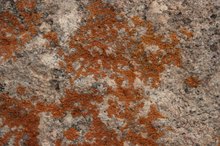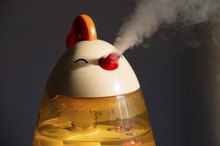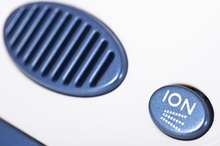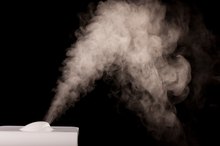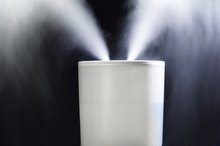What does fact checked mean?
At Healthfully, we strive to deliver objective content that is accurate and up-to-date. Our team periodically reviews articles in order to ensure content quality. The sources cited below consist of evidence from peer-reviewed journals, prominent medical organizations, academic associations, and government data.
The information contained on this site is for informational purposes only, and should not be used as a substitute for the advice of a professional health care provider. Please check with the appropriate physician regarding health questions and concerns. Although we strive to deliver accurate and up-to-date information, no guarantee to that effect is made.
Cool Vs. Warm Mist Humidifiers
Humidifiers are a common household item, particularly for parents with young children. They add water to the air, which can moisturize mucus membranes and prevent physical discomfort associated with dry mouth, lips and throat. Using a humidifier may even improve cough and nasal congestion. Both warm-mist and cool-mist humidifiers are available. Which one you choose depends on the purpose and desired features.
If you are experiencing serious medical symptoms, seek emergency treatment immediately.
Benefits
Any humidifier, whether cool-mist or warm-mist, will add moisture to the room. Maintaining the proper humidity level can add moisture to the air you breath, and protect your furnishings -- including wood furniture or floors. If you or a family member suffer from ongoing sinus or respiratory problems, or if your children need symptom relief from coughs or colds, a home humidifier might help. In addition, if you or a family member suffer from allergies, a humidifier with a high-efficiency air filter can help reduce dust and other allergens in your home environment.
- Any humidifier, whether cool-mist or warm-mist, will add moisture to the room.
- In addition, if you or a family member suffer from allergies, a humidifier with a high-efficiency air filter can help reduce dust and other allergens in your home environment.
Options
The Healthiest Types of Humidifiers
Learn More
Both types of humidifiers have a storage tank for water. Cool-mist humidifiers either use a fan to blow air through a wet wick filter, or a system that flings water at a diffuser, which breaks water into tiny particles. Either mechanism causes tiny droplets of water to be dispersed into the air. A warm-mist humidifier emits a warm mist or steam into the air. Not surprisingly, the cool-mist humidifier cools the room somewhat, while the warm-mist humidifier adds warmth to the room air. There is also a noise difference, as the warm-mist units are often quieter compared to the cool-mist humidifiers.
- Both types of humidifiers have a storage tank for water.
- There is also a noise difference, as the warm-mist units are often quieter compared to the cool-mist humidifiers.
Recommendations for Children
Since the Food and Drug Administration (FDA) recommends against cough and cold medications children younger than 2, and advises these drugs be used in caution for children over the age of 2, humidifiers are often recommended for comfort and symptom relief 1. According to the FDA, warm-mist humidifiers should not be used near young children, as they can cause serious scalds or burns. The FDA also outlines that a cool-mist humidifier allows for easier breathing because it helps nasal passages shrink, while warm vapors can cause nasal passages to swell, making breathing more difficult. However, not enough research is available to clarify whether cool or warm mist is best for symptom relief.
- Since the Food and Drug Administration (FDA) recommends against cough and cold medications children younger than 2, and advises these drugs be used in caution for children over the age of 2, humidifiers are often recommended for comfort and symptom relief 1.
- According to the FDA, warm-mist humidifiers should not be used near young children, as they can cause serious scalds or burns.
Protect Air Quality
The Purpose of Sleeping With a Vaporizer
Learn More
No matter which type of humidifier you choose, it’s important to take steps to properly clean and use the unit. Adding too much moisture to the air can encourage the growth of mold and dust mites, according to the U.S. Environmental Protection Agency (EPA) 2. Also the cool-mist humidifiers are more likely to expel minerals -- in the form of fine, white dust -- and microorganisms from the water into the air, compared to the warm-mist units. For this reason, the EPA recommends using distilled water or a filter to remove minerals from the water. In addition, its important to empty the unit daily, wiping it down and replacing the water, and cleaning the unit with a brush every third day. Always follow the manufacturer’s cleaning directions. The EPA also recommends measuring your indoor humidity, via a built-in meter or a hygrometer, available at hardware stores, to ensure the humidity does not exceed 50 percent.
- No matter which type of humidifier you choose, it’s important to take steps to properly clean and use the unit.
- The EPA also recommends measuring your indoor humidity, via a built-in meter or a hygrometer, available at hardware stores, to ensure the humidity does not exceed 50 percent.
Precautions
If you or a family member have an ongoing respiratory illness, such as asthma or sinus problems, talk to a doctor or respiratory therapist about the best type of humidifier for your home. If you start using a humidifier and you develop respiratory symptoms which seem linked to its use, stop using your unit and discuss your symptoms with your doctor.
